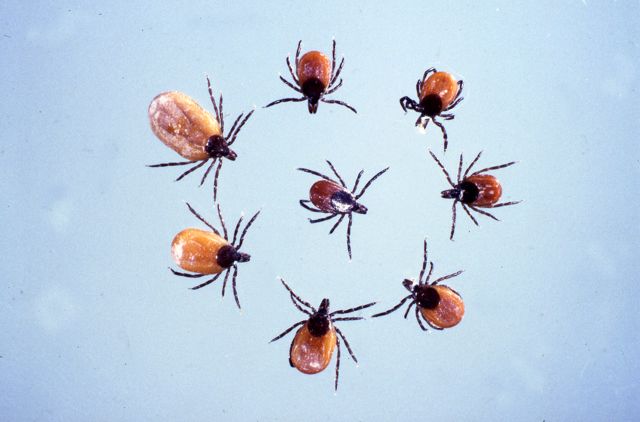I grew up in suburbia. I had a small yard, a dog, and a cat (most of the time). We trick or treated every Halloween and we knew all the neighbors (2 of which I was related to). Typical costumes moved about after dark with a vampire or two or three roaming the streets every year. It was harmless fun.
By the time I got to high school, I had outgrown trick or treating. However, that’s when I met my first honest-to-goodness vampire. Snuggled with the dog on the couch rubbing her belly, I noticed something. Thinking it was a scab, I investigated more closely.
A VAMPIRE! Ok, it wasn’t a vampire but it might as well have been. I levitated a foot off the couch and ended up in the next room.
So it was a tick but really what’s the difference between a tick and a vampire? Both seek out the living to suck their blood.
My mortal fear of these 8-legged beasts continued until graduate school. That’s when I entered the land of the undead (with regard to ticks anyway). I found myself on a farm in the Mid-Atlantic working on deer (as if you couldn’t have guessed that).
Pulling off a double digit number of ticks on a daily basis became a way of life. And a tick jar (little jar with rubbing alcohol) sitting on your dresser to collect your new found “friends” signifies acceptance.
Ticks are the most important ectoparasites infesting white-tailed deer in North America. Eighteen species have been reported from white-tailed deer in the United States. For deer, tick infestation and/or complications can include local irritation, anemia, secondary infections, and disease transmission. However, most infested deer show no signs of adverse effects with no serious health implications.
After getting over my fight or flight response to these incredible and potentially dangerous annoyances, I was on a mission. Know thy enemy.
Ticks have a complex life cycle. The blacklegged or deer tick, Ixodes scapularis, has a 2 year life cycle. Tick density varies significantly from year to year. These fluctuations depend on acorn, mice, and chipmunk abundance as acorns support small rodents and small rodents are essential to the tick life cycle.
In the fall, adult ticks are most active feeding and mating on large animals, like deer, to complete their life cycle.
Ticks harbor any number of diseases that can affect humans – anaplasmosis, babesiosis, ehrlichiosis, Rock Mountain spotted fever, and (probably the most well-known) Lyme disease. Information on deer and Lyme disease can be found in Lyme Disease & Deer – Revelation or Red Herring.
Information on tick life cycle and Lyme disease can be found on the CDC website or Lyme Disease fact sheet from PennState. Connecticut also has Managing Ticks on Your Property that may help you keep the little blood-suckers at bay.
Know that they are out in force this fall. Between the dog and I, I’ve contemplated a reinstatement of the tick jar!
-Jeannine Fleegle, biologist
PGC Deer and Elk Section

If you would like to receive email alerts of new blog posts, subscribe here.
And Follow us on Twitter @WTDresearch
